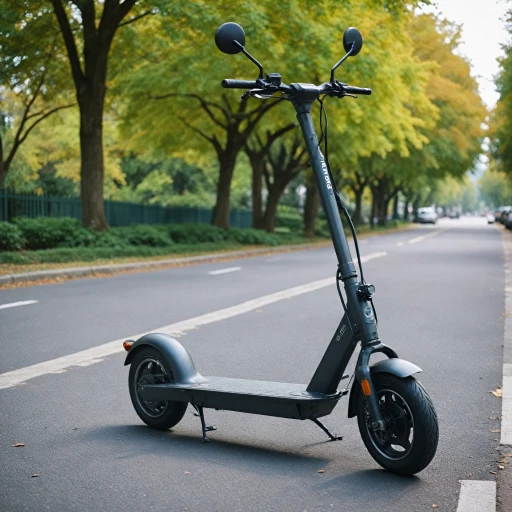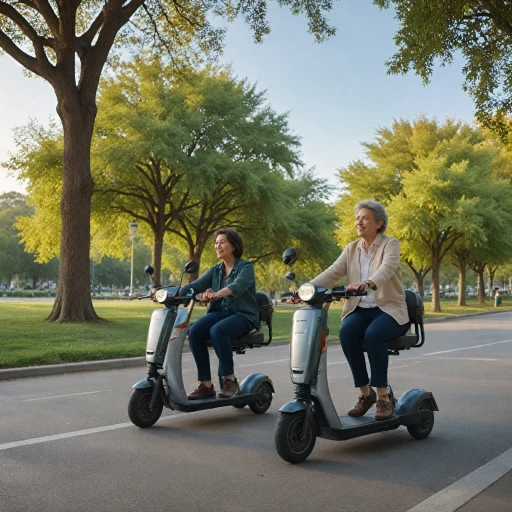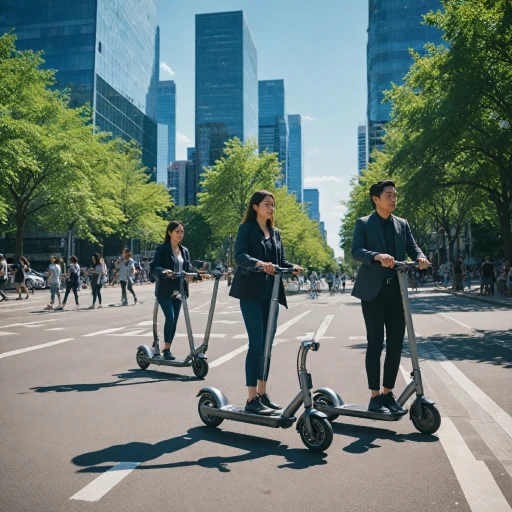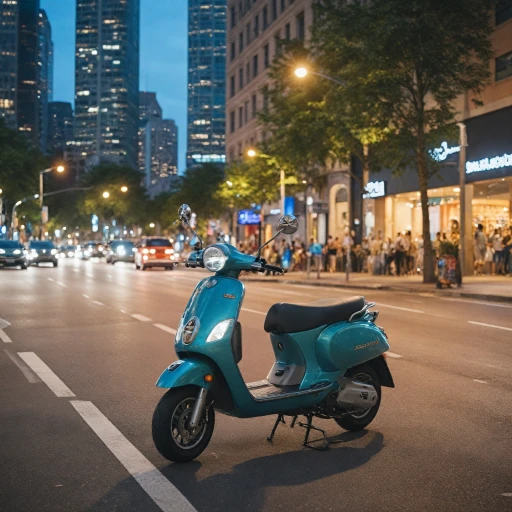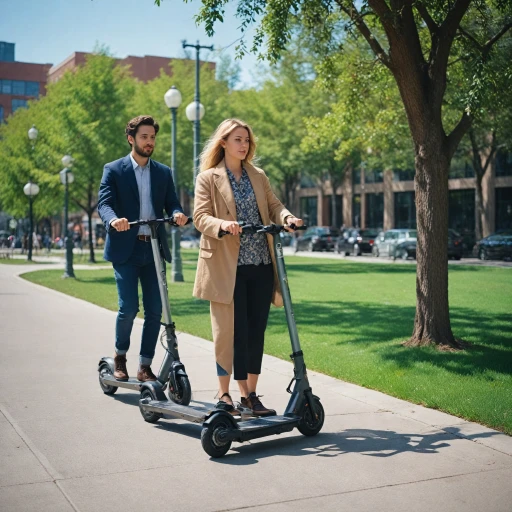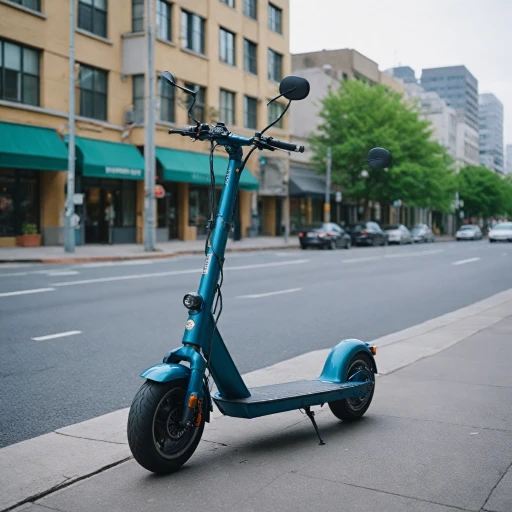
Understanding Four-Wheel Electric Scooters
Introduction to Four-Wheel Electric Scooters
Four-wheel electric scooters are gaining popularity as a reliable and stable mobility solution. Unlike their two-wheel counterparts, these scooters offer enhanced stability and balance, making them an ideal choice for those seeking a dependable mode of transportation. With the increasing demand for electric mobility solutions, understanding the nuances of four-wheel scooters is crucial for potential buyers.
Design and Structure
The design of a four-wheel electric scooter is fundamentally different from regular two-wheel scooters. The additional wheels provide a more balanced ride, which is particularly beneficial for individuals with mobility challenges. These scooters often feature a robust frame, capable of supporting a higher weight capacity, sometimes reaching up to several hundred lbs. This makes them suitable for a wide range of users.
Performance and Range
When it comes to performance, four-wheel electric scooters are designed to offer a comfortable and efficient ride. They typically have a range of several miles per charge, depending on the model and battery capacity. The speed of these scooters can vary, with some models reaching up to 15 mph, ensuring a swift yet safe journey. For those interested in exploring the world of electric scooters, understanding the range and speed capabilities is essential.
Market Availability and Pricing
Four-wheel electric scooters are available in various models and price ranges. The price of these scooters can vary significantly based on features such as speed, range, and weight capacity. While some models are available at a regular price, others might be on sale, offering a more affordable option for budget-conscious buyers. It's important to consider the original price and any ongoing sales to make an informed purchase decision.
Conclusion
In summary, four-wheel electric scooters offer a unique blend of stability, performance, and convenience. They are a viable option for those seeking a reliable mobility solution. As you explore the benefits and challenges of these scooters, consider factors such as design, performance, and pricing to find the right product for your needs.
Advantages of Four-Wheel Electric Scooters
Exploring the Perks of Stability
Four-wheel electric scooters offer a variety of advantages that set them apart from their two-wheel counterparts. Let's dive into these benefits, which can significantly enhance the riding experience.- Superior Stability: With an additional wheel, these scooters provide much better stability, especially useful for individuals with balance issues or those venturing into uneven terrains. This stability aids in safe and smooth mobility.
- Enhanced Mobility for All: Catering to a diverse audience, from elderly users to those with mobility challenges, four-wheel scooters provide an inclusive mode of transportation. Their design is often oriented towards comfort and ease of use, ensuring that people with different needs can maintain independence.
- Tougher Design for Various Terrains: Many four-wheel mobility scooters are built to handle diverse environments, from sidewalks to more rugged landscapes. This robust design makes them a preferable choice for heavy-duty users.
- Impressive Weight Capacity: With more wheel support, these scooters often boast a higher weight capacity, accommodating users up to several hundred lbs. This feature can be crucial when considering the regular price and value of the scooter.
- Extended Range and Speed Options: Some models offer impressive speed and range capabilities, facilitating longer rides without frequent charging. Depending on the model, users can reach speeds up to 8 mph and ranges extending to 20 miles or more.
Challenges and Considerations
Potential Drawbacks and Considerations
While four-wheel electric scooters offer a range of benefits, there are several challenges and considerations to keep in mind if you're thinking of purchasing one. Unlike regular scooters, the additional wheel adds to the overall weight and size, which can affect portability and storage. Let’s look at some specific factors:
- Weight and Maneuverability: The increased weight of four-wheel models, often exceeding several dozens of lbs, can be a hindrance. This makes them less agile compared to their two-wheel counterparts. It's crucial to consider the weight capacity and mobility scooters features before making a decision.
- Price Considerations: Given their sophisticated build and additional parts, four-wheel electric scooters are generally priced higher. The price might near the higher end of the spectrum, with the price sale often not differing much from the original price or regular price.
- Storage and Transport: Due to their bulkier design, they require more space and may not fit into small car trunks. Those considering essential components for metro mobility scooters should note the logistical challenges when transporting.
- Range and Speed: While they typically offer a more extended range miles and improved stability at higher speed mph, the maximum speed might still be lower compared to high-performance models. The range and speed need to be assessed to ensure they meet your travel needs.
These mobility factors vary by brand and model, consequently affecting user reviews. Understanding these challenges ensures a well-informed choice, providing a balance of all the benefits highlighted previously.
Comparing Two-Wheel vs. Four-Wheel Electric Scooters
Comparative Analysis of Wheel Configurations
When it comes to choosing between two-wheel and four-wheel electric scooters, potential buyers often weigh factors like mobility, weight, and speed to determine which is best suited to their needs. Each configuration offers its own set of advantages and considerations that cater to varying preferences and requirements, making it crucial to understand their differences.- Stability and Balance: Four-wheel electric scooters are generally more stable, providing increased balance, especially at lower speeds or when standing still. This makes them an appealing choice for those seeking enhanced safety and confidence, particularly for individuals with mobility constraints.
- Maneuverability: Two-wheel scooters, with their lighter weight and smaller size, excel in maneuverability. They can weave through traffic and navigate tight spaces better than their four-wheel counterparts. This characteristic is particularly beneficial for city commuters looking for a swift travel solution.
- Weight and Portability: Though both styles differ in weight, four-wheel models tend to be heavier with added mechanical support for the extra wheels and enhanced stability features. As such, they might not be as easily portable as the two-wheel scooters, which are designed for easy lifting and storage.
- Speed and Range: Each type of scooter varies in speed capacity. While the top speed (mph) might be similar across both categories, the build often impacts the range miles they can achieve. Four-wheel scooters are built more for stability and endurance over longer distances than achieving max speed.
- Price Considerations: The regular price of four-wheel scooters can be higher than two-wheel versions, reflecting their heavy-duty design and additional components. Consumers should consider if the price sale or regular price is justified by the added stability and features matching their needs.
Key Features to Look For
Essential Elements for Choosing Four-Wheel Electric Scooters
When diving into the world of four-wheel electric scooters, it's crucial to know what features to prioritize to meet your mobility needs. Here's a guide to help you find the right fit:- Max Speed: Speed can greatly influence your riding experience. Consider scooters with a speed mph that matches your requirements, whether it’s for leisurely rides or more dynamic commuting. Reviews often highlight how speed impacts user satisfaction.
- Range: Look at the range miles a scooter offers on a single charge. A longer range can provide greater freedom and fewer stops for recharging. It's fantastic for longer commuting without worry.
- Weight and Capacity: Ensure the weight lbs of the scooter fits your needs in terms of handling. The weight capacity lbs is also a critical factor, especially if the scooter will be used to carry additional loads.
- Wheel Design: The four-wheel setup enhances stability and is ideal for users needing extra support. Consider the combination of front and rear wheel mobility features that improve handling across various terrains.
- Price Considerations: From price original to price sale, your budget will guide your options. Keep an eye on scooters available for sale, as they often offer the best balance of features and affordability.
- Safety and Comfort Features: Check for enhancements like adjustable seats, ergonomic handlebars, and anti-slip surfaces which ensure a comfortable and safe ride. These features are often highlighted in product reviews.
Future Trends in Electric Scooters
Emerging Innovations in Electric Scooters
As the domain of four-wheel electric scooters continues to expand, several emerging trends are reshaping the landscape, influencing not only the features but also how these scooters cater to the diverse needs of users.- Advanced Battery Technology: A pivotal trend revolves around enhancing the range miles and capacity lbs. Next-generation batteries are crucial in expanding the range while maintaining a manageable weight lbs, allowing for more extended trips without frequent recharging.
- Enhanced Mobility Features: Recent advancements ensure that these scooters are more accessible. From heavy duty models with increased weight capacity to lightweight versions, there is an emphasis on making them suitable for various mobility needs.
- Price and Product Accessibility: Electric scooters are becoming more accessible, with prices ranging from budget-friendly options to high-end models with premium features. Despite fluctuations, price sales and stock regular updates ensure potential buyers have a clear view product regarding availability.
- Design and Ergonomics: Carve out a niche for consumers seeking both functionality and aesthetics. Front rear configurations are increasingly balanced with comfortable, user-friendly design elements, accommodating longer rides and diverse terrains.
- Integration of Smart Technology: The incorporation of smart technology not only improves the max speed and speed mph aspects but also adheres to safety regulations, offering users enhanced control, safety, and efficiency.


